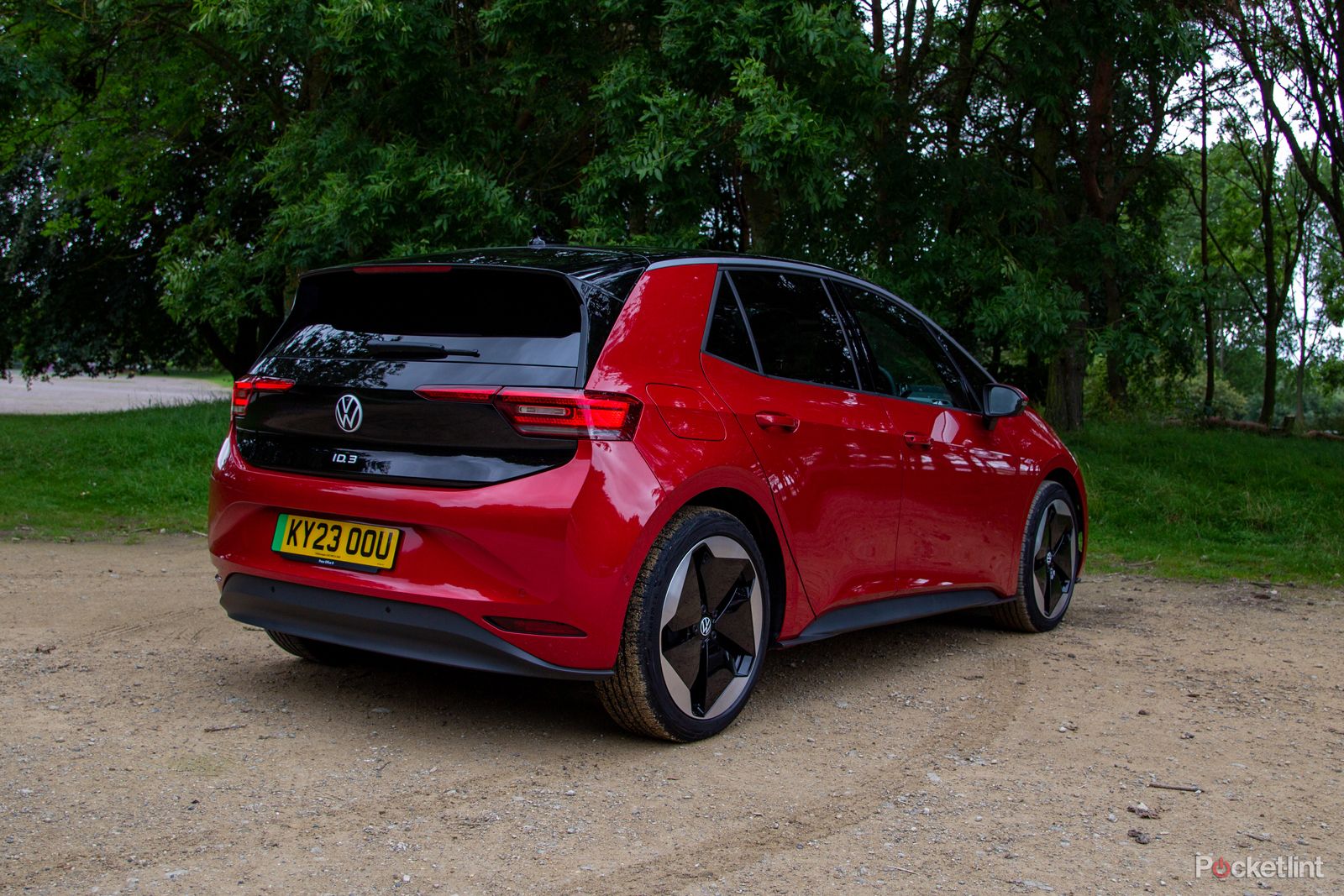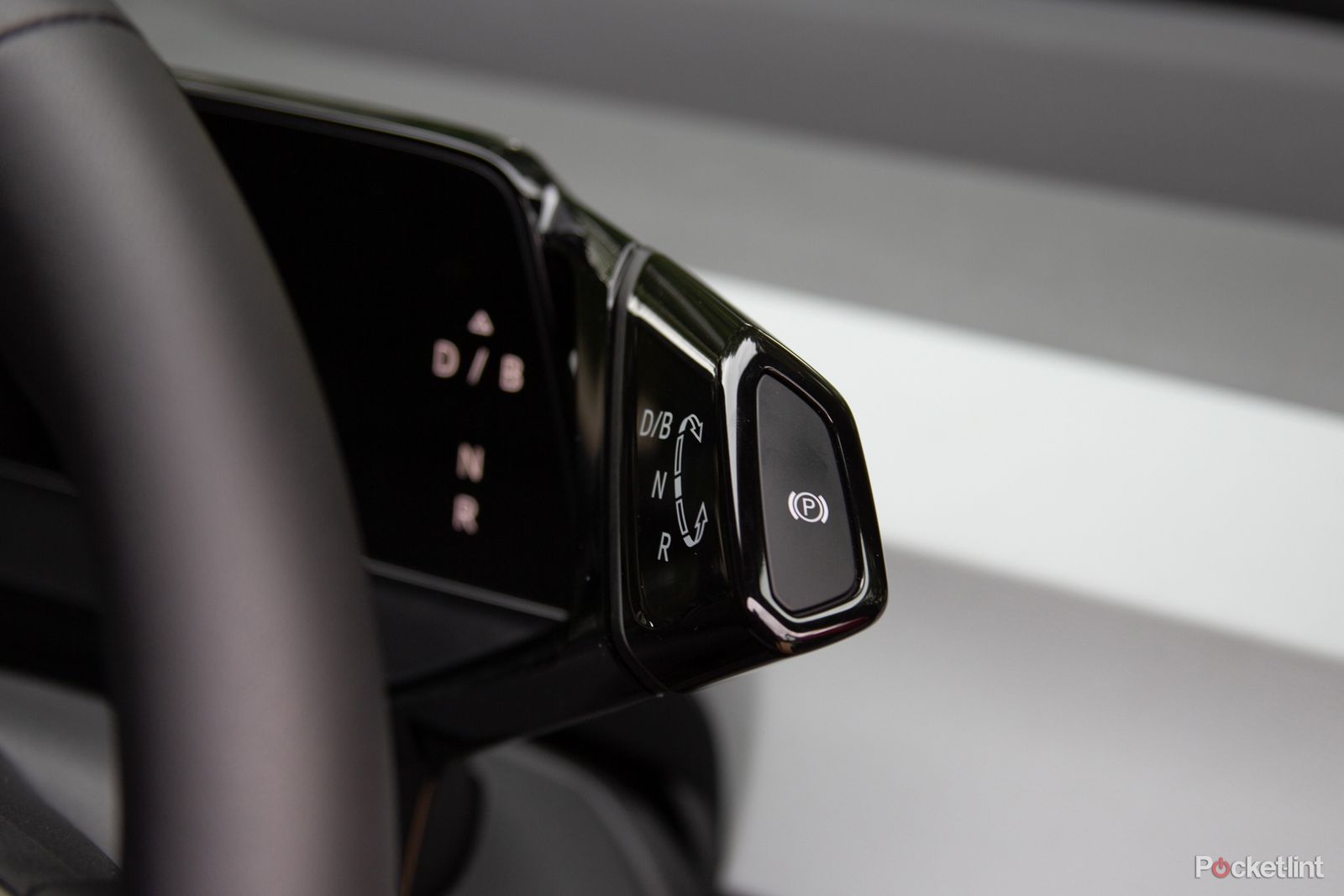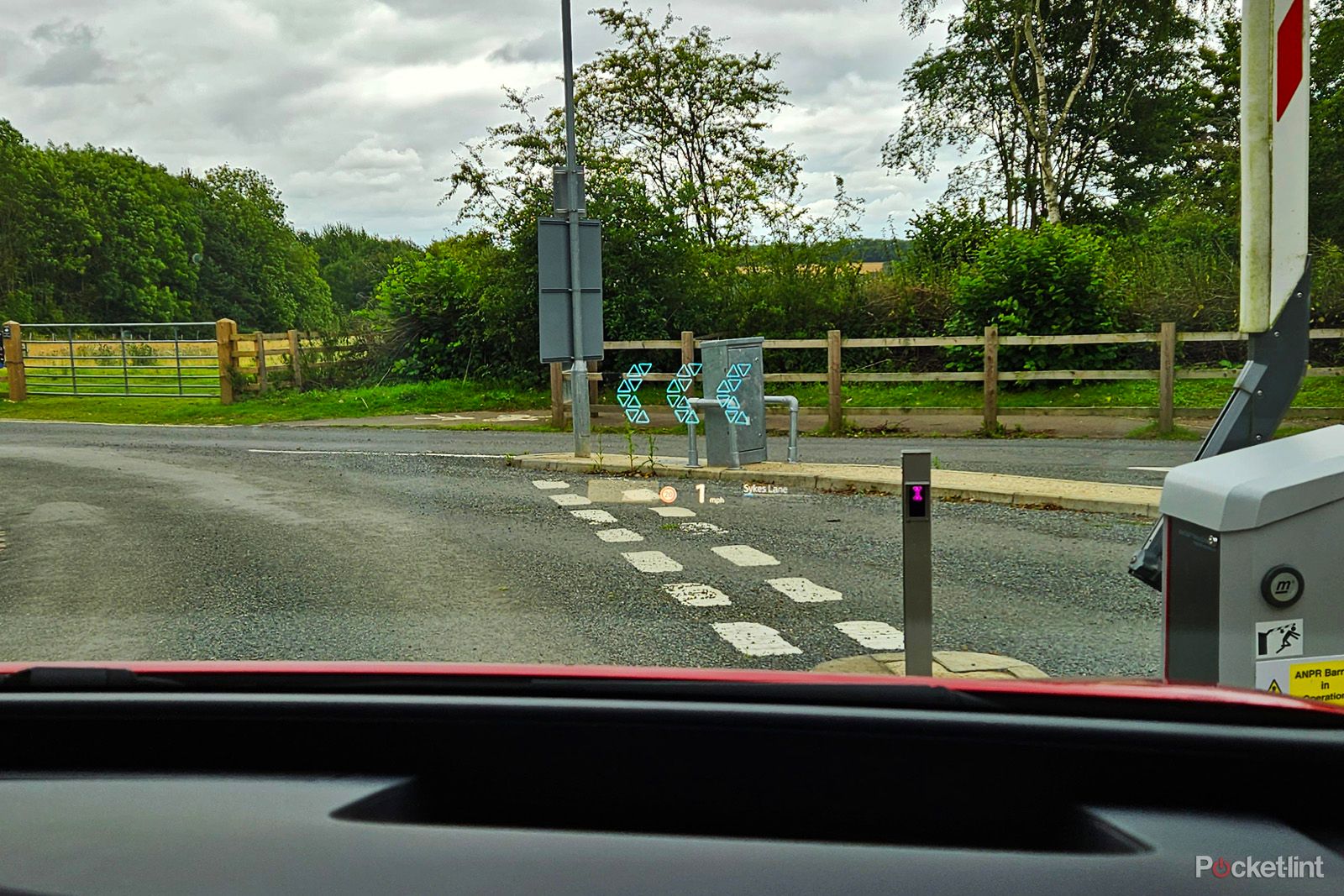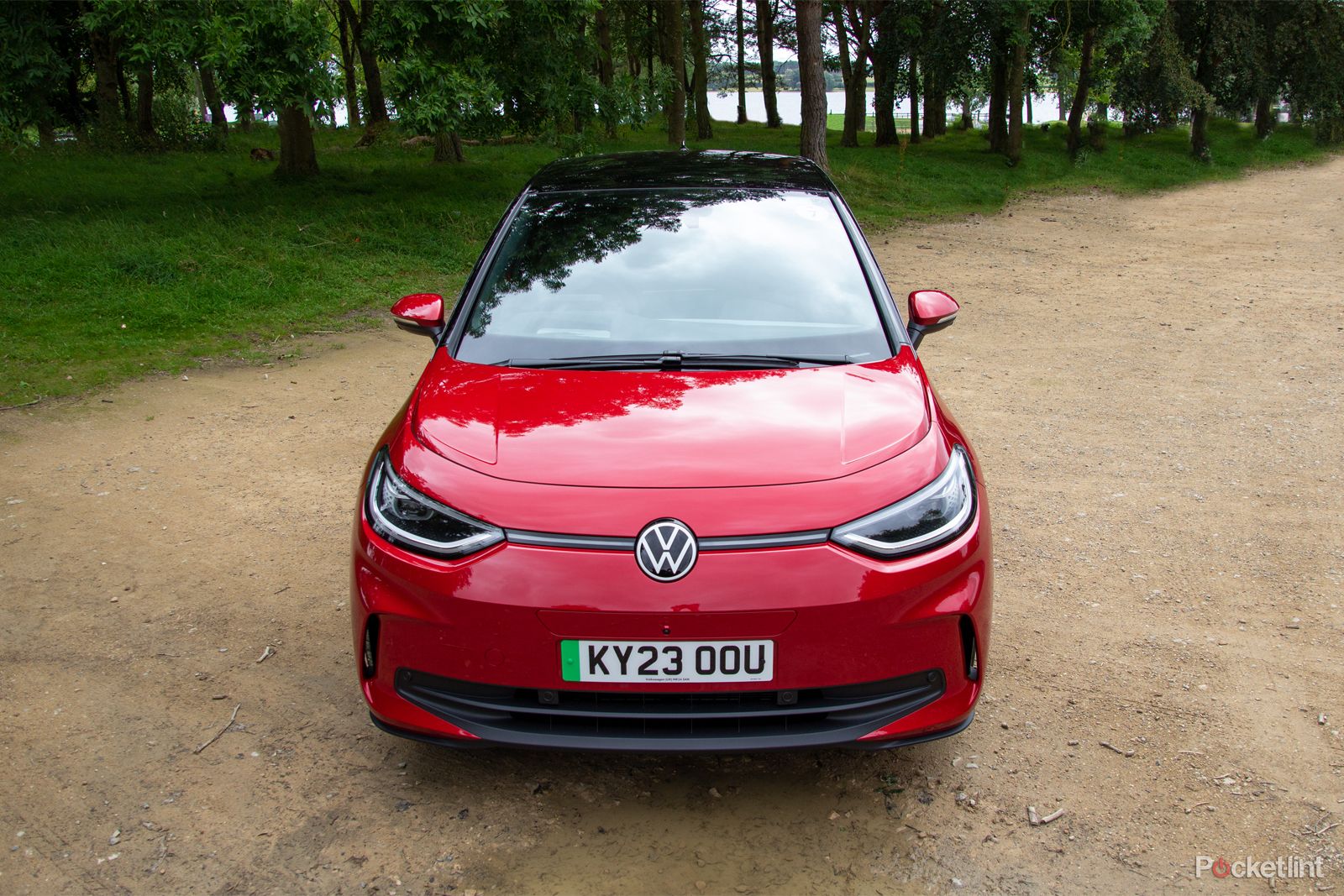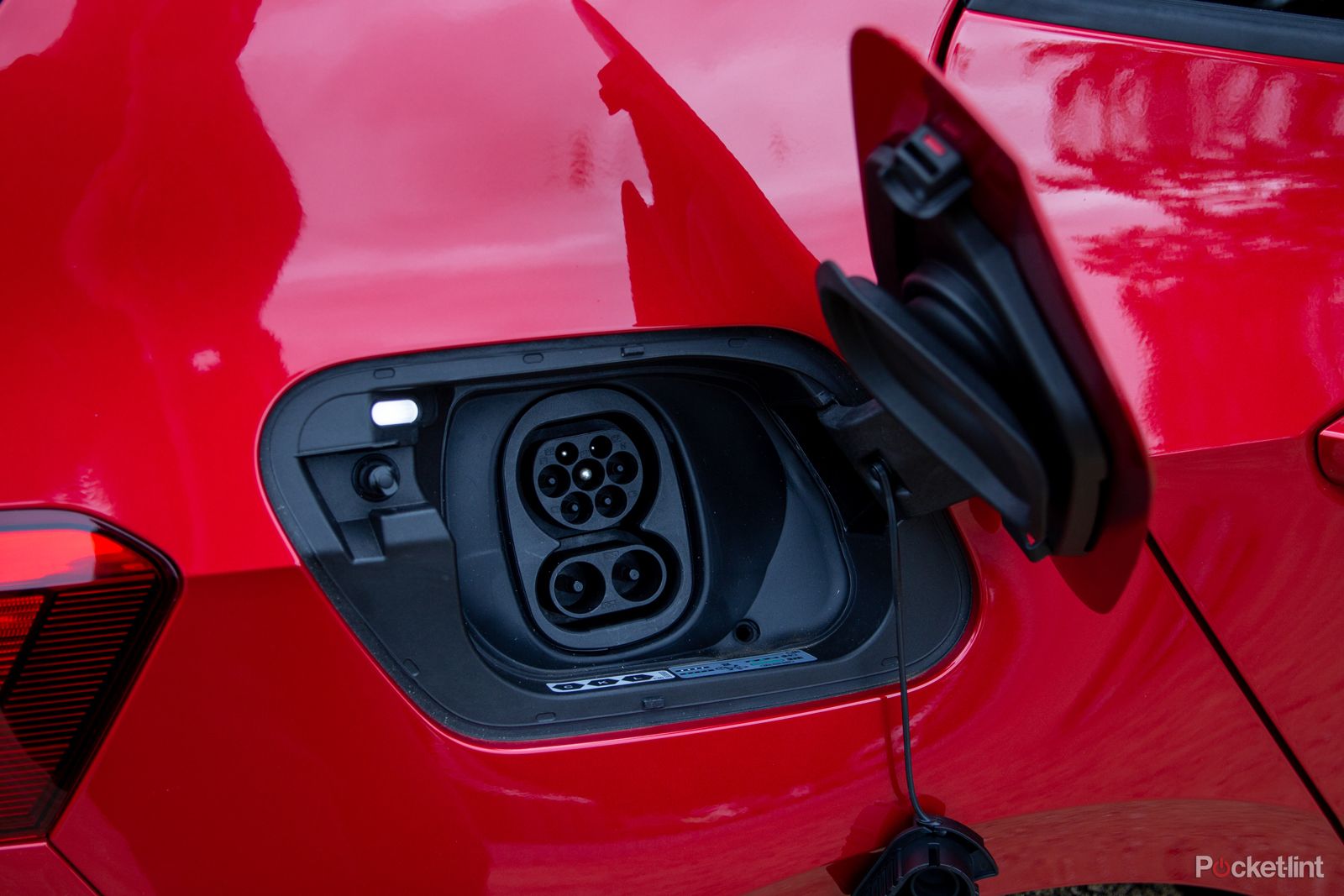Volkswagen's electrical reinvention started with the ID.3. The first model designed to be purely electric - supplanting the e-Golf that came before it - the VW ID.3 has gone on to be a top seller, in the UK at least. It's called the ID.3 because it's symbolic of the third generation for VW - from the Beetle through the Golf and now the ID.3.
This size of car has always been designed for mass market, small enough to be affordable, large enough to be practical. That's true across Europe, perhaps not so in North America where everything is bigger, and sitting on VW Group's MEB platform, it's the first model of this new batch to get a mid-life refresh.
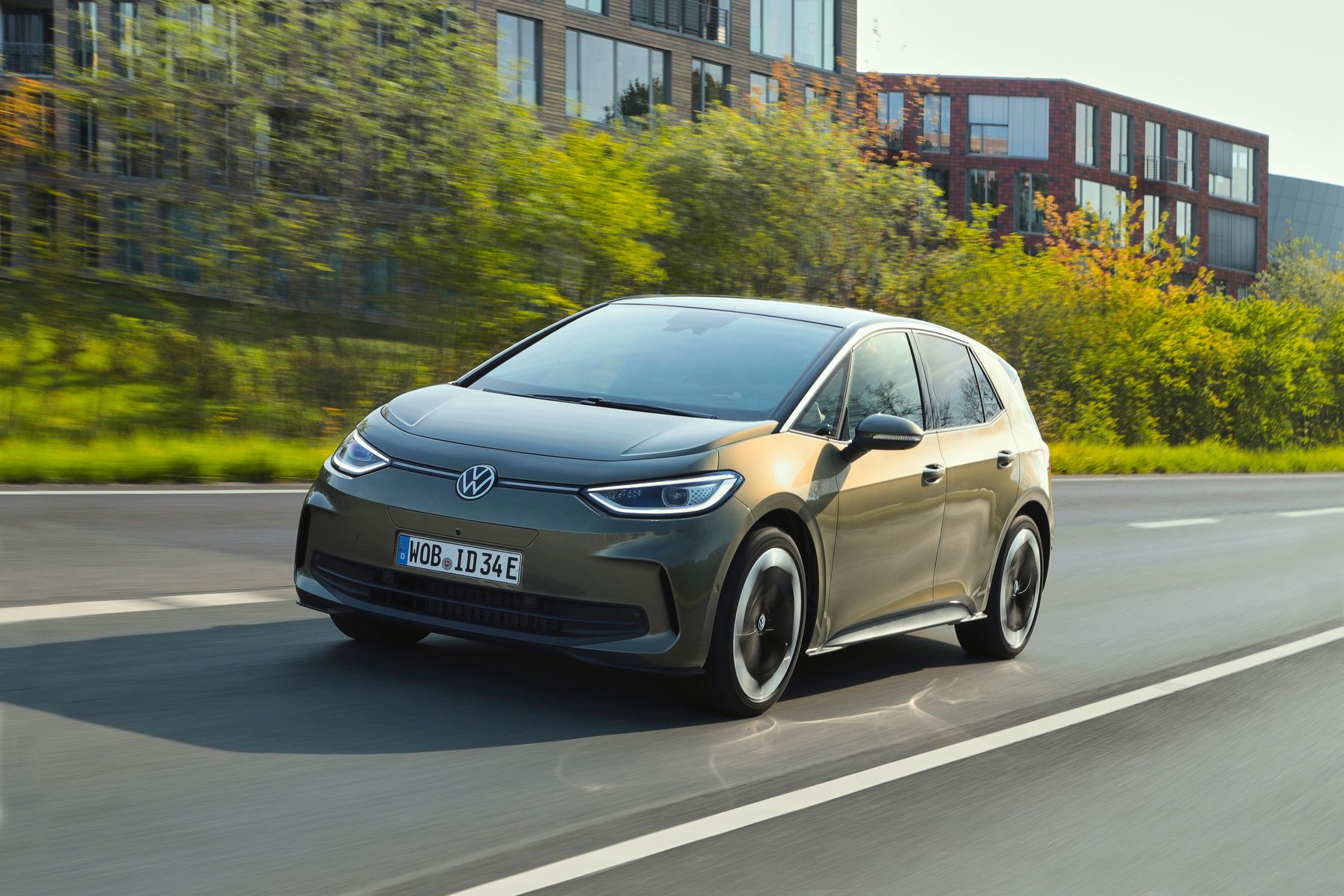
Volkswagen ID.3
The VW ID.3 (2023) doesn't make huge changes, but cleans up the interior while boosting the quality of the finishes. It's still going to be a popular choice due to the range and faster charging, but it is expensive for what you get.
- Looks great
- Practical size - ideal city car
- Economical - gives good battery economy
- Few changes from the older model
- The interior tech is still a little fiddly
What's actually changed?
The previous version of the VW ID.3 hit the roads in 2020, having been unveiled in 2019. It was a radical change in design both on the interior and the exterior - which included an update to VW's whole brand identity, with a new badge and everything. But the new ID.3 is instantly recognisable: this is a facelift rather than a complete redesign.

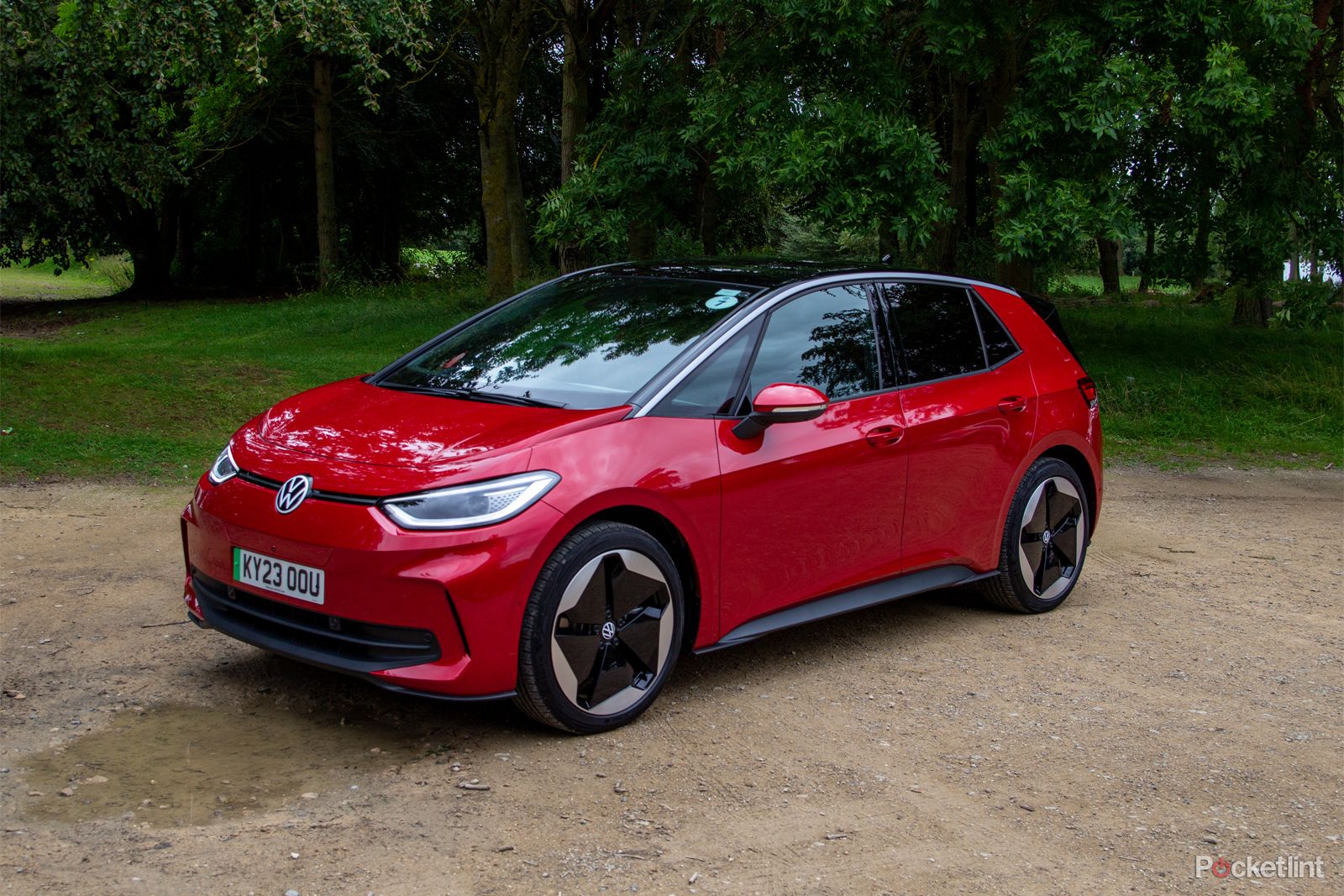




Moving around the exterior of the car there are a couple of details to take in. The nose has been made slightly sportier, with openings to air airflow around the exterior of the car, while also helping cooling. When the ID.3 first launched, the message was that electric cars didn't need a conventional grille, because there's no demand for air to cool the engine. Now manufacturers have accepted that air flow is important to increase the aerodynamic efficiency of the car, as well as still having uses for cooling.
The big thing you might notice is that the new ID.3 bonnet/hood looks longer. That's because the black bar that sat under the windscreen has been removed. This gives great colour volume at the front, where before half of it was black - and I think it looks great as a result. Moving to the side of the car, you'll find that the model badging has been removed, as well as decals on the rear quarter - which just gives cleaner lines overall.
These are little changes, which fit with the mid-life update. The VW ID.3 maintains its sleek aesthetic, now cleaner overall, while hanging onto those detail, like the slight smile in the front bodywork, the two-tone finish thanks to the black roof - and there's now a nice khaki green colour to give you something more contemporary to choose.
The VW ID.3 comes in two models at the moment - Pro and Pro S and they are largely the same in terms of aesthetics, differing in the battery size mainly, while there will also be an ID.3 GTX in the future, which will move to all-wheel drive over the rear-wheel drive arrangement here.
An interior quality lift
VW's focus on the interior of the newer ID.3 is boosting the quality. This is almost certainly in response to increased competition at this price point, but there's also some price creep to be factored in. With the forthcoming launch of the ID.2 - designed to be much more affordable - I suspect that VW wants to use interior quality as a differentiating factor. The new ID.3 starts at just over £37k for the Pro, swelling to nearly £43k for the Pro S at the time of writing.
At first glance you might struggle to see these interior changes. The overall layout of the car remains the same, with the changes mostly focusing around increasing the amount of soft-touch finishes on the interior, introducing stitching across the front, so it's less like a giant bar of plastic. I can see what VW is getting at and visually it does make a little difference, but there's no avoiding that the ID.3 is predominantly harder plastics, through the centre console and door panels and that's as true of this model as it was of the predecessor.
Softer materials come to the doors, so the elbow spaces are comfortable, but the centre of the car features glossy plastic inlay in areas that see a lot of fingerprints - around the cupholders and the phone charging bay. The same is true of the central display that sits atop the dash, which is surrounded by glossy black plastic in all the areas you might want to rest your hand when operating the touchscreen display or aircon. You'll need to give this car a good wipe to keep it looking its best.



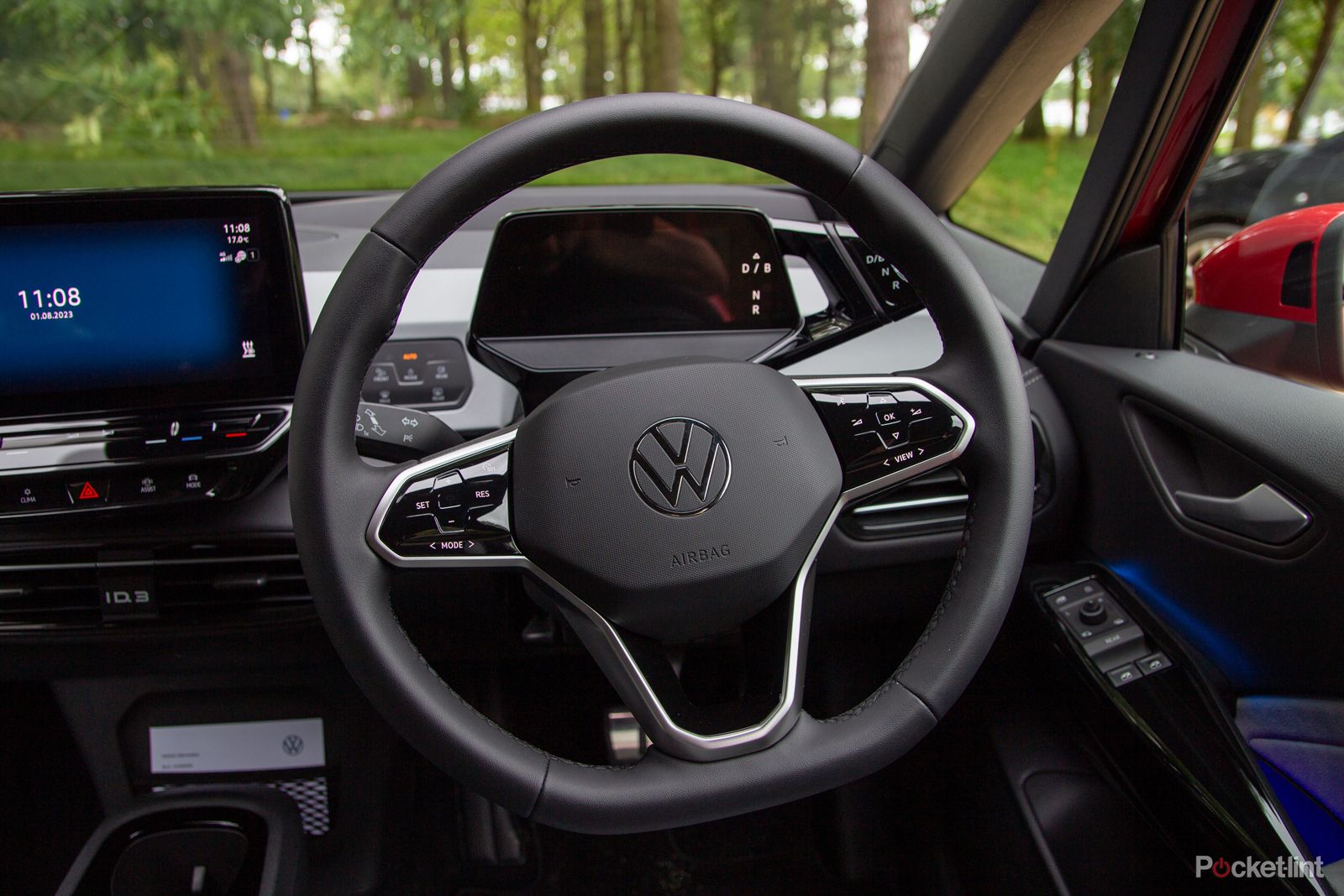


The interior does offer plenty of space, however. The MEB platform this car sits on puts the battery in the floor in a so-called skateboard design. This gives the design more freedom to increase interior room, pushing into the space that might previously have been filled with a combustion engine. The interior of the ID.3 is nicely roomy and there's plenty of space in the rear too, with enough knee space in back for typical adults. There's also 385 litres of boot space, which is useful, but not quite as capacious as the Kia Niro EV.
The rake of the windscreen gives the feeling of plenty of glass up front - including those quarter lights that flank the dash, making visibility around the car pretty great. Although there's a fairly substantial trailing edge spoiler on the roof, the visibility out of the rear window is still respectable and that just makes the ID.3 easier to handle, especially on tighter urban roads, because you can easily use the Mk 1 eyeball rather than digital aids when manoeuvring.
It's also comfortable. The message for the ID.3 is more about sustainable materials, so the focus isn't on swathes of leather, it's more about interesting fabrics instead. It's a good result with comfortable seats which offer plenty of support. Speaking of the seats, there's a little detail to watch out for. The 77kWh version of the ID.3 only offers four seats - if you want this car to carry five, you'll have to opt for the 58kWh version.
Ultimately the VW ID.3 is a nice place to be, with ambient lighting contributing to the overall atmosphere. For all I've called out the heavy use of plastics, I enjoy being in the ID.3: there's a futuristic feeling to it and some of that comes down to the way that the displays have been used.
The interior tech
The thing that defines VW's ID models is the way the central display and the driver display have been arranged. That's true of the ID.4 and the ID.5, although it will change with the forthcoming ID.7. The biggest factor is the smaller driver display, with the drive selector on the side. That means you have to reach behind the steering wheel to put it in drive or reverse and so on, and I'm not a huge fan of this system. Having driven all the models that use this selector, I still think it's a bit fiddly to use.
Shrinking displays are nothing new. The rival Tesla Model 3 has no driver display at all and the minimalisation means you only get basic information. On the new ID.3 however, VW is offering a heads-up display (HUD), to augment the information and put it in your eyeline so you can see exactly where you're supposed to turn, traffic sign information and so on. There's an argument that a heads-up display is actually better than other displays because you don't have to look away from the road to see it. It's a useful addition, but be warned that if you wear polarised sunglasses you might find it's almost invisible. Otherwise the driver display carries only essential information and minimally displayed, with only a couple of customisations available to the driver.
But let's turn to the elephant in the room, the user interface on that main display. VW's aim was to create a system that was more modern, more like an iPad experience, where your fingers can quickly skip through the menus and get to what you want. But the user interface on the original ID.3 was the most criticised element on launch - it was slow, it was prone to crashes, and it wasn't as intuitive as it needed to be.
VW has put a lot of effort into improving the system to make it all work better, pushing out over the air updates to boost performance. It's fine, but only fine, and it's hard to see that it will attract many fans over the constantly-evolving and updated Apple CarPlay or Android Auto (both supported wirelessly). Car manufacturers find themselves in a position of developing systems to compete with what's in someone's pocket. The advantage of using the integrated system is that everything is supported across other displays and the HUD - whereas support for things like the floating chevrons when using a smartphone-based system is restricted, an argument for using VW's own navigation.
VW has a voice assistant, but it's never quite as useful in returning real information as something like Google Assistant, which takes over the voice button on the steering wheel when running Android Auto
The ID.3 has a 10-inch display as standard and the user interface does involve a fair amount of clicking around. My problem with this interface is that you have to press the home button all the time as you move around, so it's a few more clicks to get to where you want all the time. Having mentioned the ID.7 above, it's also worth mentioning the ID.3's buttons. There are four of them under the display allowing direct access to the parking menu, climate control, driving assistance features and drive modes. Pressing the driving assistance button opens a visual display showing the car on the road letting you click elements to find relevant controls. It's not something you'll want to use while driving and you can skip it and access a regular menu instead - but what's interesting about these buttons is that I find myself rarely using them. I forget they are there, because, generally, I'm not changing the driving assistance systems or the driving mode on a regular basis. VW knows this and on the next interior - which will appear in the ID.7 - these buttons have gone, replaced by permanent on-screen controls instead.
What this all adds up to is an infotainment system that's still not great to use. It has definitely moved forward in the past few years, but it's hard to see that anyone will choose to use this system over using their connected phone - unless desperate for the full HUD navigation experience.
Drive, power and range
There are two battery options for the ID.3, the smaller 58kWh, and the larger 77kWh battery - the latter fitted to my test model. The higher capacity give you 347 miles according to VW's figures, with a cited 4.2 miles per kWh on a WLTP (combined) cycle. This tallied nicely with the 4.0 miles per kWh long-term average for my test car - reported as 320 miles of range - and this is a really usable range. Whether you think the range justifies the asking price, which is just under £43,000 at the time of writing, is another question, because the ID.3 does feel a little expensive, especially when compared to the likes of the Kia Niro EV or Hyundai Kona Electric.
It's paired with a single motor driving the rear wheels (with VW using that to make a connection to the classic rear-wheel drive VW Beetle), with a 150kW motor (206PS). This can deliver a 0-62mph time of 7.2 seconds. That's not going to bother Tesla, but I rarely find myself racing quarter miles against the clock. Importantly, the VW ID.3 feels nippy, especially in the 0-30mph range that's important. For those wanting more, the dual-motor ID.3 GTX (to be announced…) will deliver more of a hot hatch driving experience.
The new model ID.3 gets a boost in charging rate too. It will now support up to 170kW charging, which means you can get yourself topped up even faster and get back to your journal. Choose the ID.3 Pro S and you've got a competent long-range driving machine. But admittedly, the ID.3 feels best on nicely surfaced twisting roads. The suspension is a little on the stiff side, but it turns in nicely and responds quickly when you stamp on the candidly-labelled play and pause pedals.
Driving the VW ID.3 is actually a pleasant experience. You have the advantages of a car that's light and compact - that's better efficiency and range from that battery - while parking is great in tight spaces. I'd choose the 58kWh option if it was mostly for urban driving, because in reality, the 260 mile range it offers will suit those and you'll save quite a lot on the price too. Note that the 58kWh model only supports 120kW charging, however.
As an additional bonus, the VW ID.3 now supports bi-directional charging. This will allow you to draw power from the car's battery. That's been touted as important for future energy management (if everyone has a power reserve on their drive, then you can balance out the power grid more easily) but in the short term that might mean you can drive it to a campsite and run your camp from that car's big battery.
Verdict
The VW ID.3 doesn't present a huge change from the model that it replaces, but it's an important car for VW. This is a segment the company wants to dominate - and in many regards it does. The VW ID.3 has sold well and there's a chance that the older models are going to start coming onto the second-hand markets soon (as the first leases expire) but why should you choose the new model?
In terms of looks, the new model does look better, but it feels the same once you're in the driving seat. This is very much the VW ID.3 experience and that's one that's easy to drive, efficient with its power and perfectly comfortable. The introduction of the heads-up display makes it attractive, as does the faster charging rate for those heading out on longer drives needing a faster top-up.
But the price is rising and this does look like a relatively expensive model, with the Cupra Born offering essentially the same experience for a little less money.

